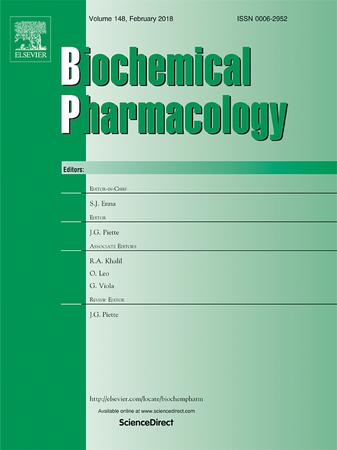Microglia in retinal diseases: From pathogenesis towards therapeutic strategies
IF 5.3
2区 医学
Q1 PHARMACOLOGY & PHARMACY
引用次数: 0
Abstract
Microglia, a widely dispersed cohort of immune cells in the retina, are intricately involved in a diverse range of pivotal biological processes, including inflammation, vascular development, complement activation, antigen presentation, and phagocytosis. Within the retinal milieu, microglia are crucial for the clearance of dead cells and cellular debris, release of anti-inflammatory agents, and orchestration of vascular network remodeling to maintain homeostasis. In addition, microglia are key mediators of neuroinflammation. Triggered by oxidative stress, elevated intraocular pressure, genetic anomalies, and immune dysregulation, microglia release numerous inflammatory cytokines, contributing to the pathogenesis of various retinal disorders. Recent studies on the ontogeny and broad functions of microglia in the retina have elucidated their characteristics during retinal development, homeostasis, and disease. Furthermore, therapeutic strategies that target microglia and their effector cytokines have been developed and shown positive results for some retinal diseases. Therefore, we systematically review the microglial ontogeny in the retina, elucidate their dual roles in retinal homeostasis and disease pathogenesis, and demonstrate microglia-based targeted therapeutic strategies for retinal diseases.

视网膜疾病中的小胶质细胞:从发病机制到治疗策略。
小胶质细胞是视网膜中广泛分布的一组免疫细胞,它们错综复杂地参与了各种关键的生物过程,包括炎症、血管发育、补体激活、抗原呈递和吞噬。在视网膜环境中,小胶质细胞对清除死亡细胞和细胞碎片、释放抗炎药物以及协调血管网络重塑以保持平衡至关重要。此外,小胶质细胞还是神经炎症的关键介质。在氧化应激、眼压升高、遗传异常和免疫失调的触发下,小胶质细胞会释放多种炎症细胞因子,导致各种视网膜疾病的发病机制。最近关于视网膜中小胶质细胞的本体和广泛功能的研究阐明了它们在视网膜发育、平衡和疾病过程中的特征。此外,针对小胶质细胞及其效应细胞因子的治疗策略已经开发出来,并在一些视网膜疾病的治疗中取得了积极的效果。因此,我们系统地回顾了视网膜中小胶质细胞的本体,阐明了它们在视网膜稳态和疾病发病机制中的双重作用,并展示了针对视网膜疾病的基于小胶质细胞的靶向治疗策略。
本文章由计算机程序翻译,如有差异,请以英文原文为准。
求助全文
约1分钟内获得全文
求助全文
来源期刊

Biochemical pharmacology
医学-药学
CiteScore
10.30
自引率
1.70%
发文量
420
审稿时长
17 days
期刊介绍:
Biochemical Pharmacology publishes original research findings, Commentaries and review articles related to the elucidation of cellular and tissue function(s) at the biochemical and molecular levels, the modification of cellular phenotype(s) by genetic, transcriptional/translational or drug/compound-induced modifications, as well as the pharmacodynamics and pharmacokinetics of xenobiotics and drugs, the latter including both small molecules and biologics.
The journal''s target audience includes scientists engaged in the identification and study of the mechanisms of action of xenobiotics, biologics and drugs and in the drug discovery and development process.
All areas of cellular biology and cellular, tissue/organ and whole animal pharmacology fall within the scope of the journal. Drug classes covered include anti-infectives, anti-inflammatory agents, chemotherapeutics, cardiovascular, endocrinological, immunological, metabolic, neurological and psychiatric drugs, as well as research on drug metabolism and kinetics. While medicinal chemistry is a topic of complimentary interest, manuscripts in this area must contain sufficient biological data to characterize pharmacologically the compounds reported. Submissions describing work focused predominately on chemical synthesis and molecular modeling will not be considered for review.
While particular emphasis is placed on reporting the results of molecular and biochemical studies, research involving the use of tissue and animal models of human pathophysiology and toxicology is of interest to the extent that it helps define drug mechanisms of action, safety and efficacy.
 求助内容:
求助内容: 应助结果提醒方式:
应助结果提醒方式:


